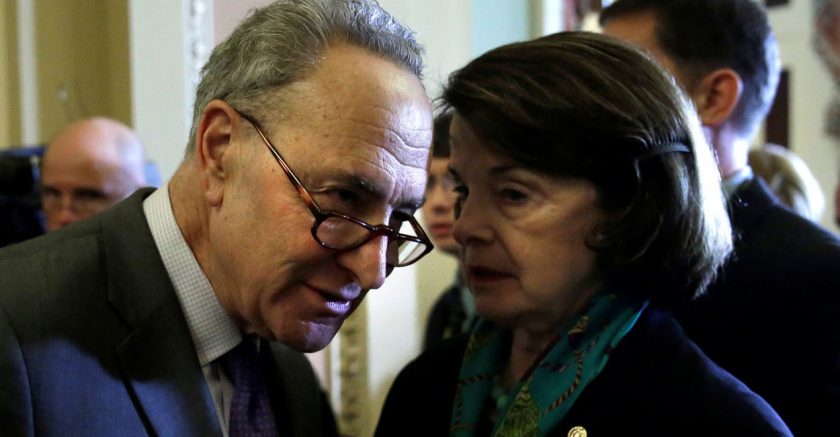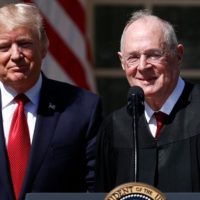Recent remarks by Sen. Dianne Feinstein, D-Calif., show the script that the left will be using to oppose President Donald Trump’s Supreme Court nominee to fill the vacancy from the retirement of Justice Anthony Kennedy.
The most prominent point so far is that the Senate should wait until after the 2018 election to consider Trump’s nominee. Echoing Senate Minority Leader Charles Schumer, D-N.Y., Feinstein, speaking in the Senate Judiciary Committee’s June 28 business meeting, said following the traditional confirmation pattern would be hypocritical.
Ranking member Feinstein, echoed by Sen. Amy Klobuchar, D-Minn., claimed—as every Democrat and their left-wing allies will certainly do—Republicans set a “new standard” in 2016 that the Senate should never consider any Supreme Court nominee in any election year.
If Republicans had taken that position in 2016, it certainly would have been new and Democrats might well benefit from it today. But that standard has never existed: not before, not during, and not after 2016.
The Constitution gives the power to nominate and, subject to the Senate’s “Advice and Consent,” the power to appoint judges. The Senate’s role begins with deciding the best way to handle a particular nomination.
In 2016, Republicans put their position on this question in writing. In a letter dated Feb. 23, 2016, the Judiciary Committee majority members wrote that the “Presidential election is well underway. Americans have already begun to cast their votes.” They concluded that, “given the particular circumstances under which this vacancy arises … this Committee will not hold hearings on any Supreme Court nominee until after our next President is sworn in on Jan. 20, 2017.”
Two things stand out from this letter. First, it acknowledges that the Constitution gives the power to nominate and appoint judges to the president, not to the Senate. The Senate is a check on the president’s appointment power, but does not have separate or independent power of its own to pick judges. That’s the obvious reason why the presidential election was relevant in 2016, but the mid-term election is irrelevant today.
The second important feature of the Republicans’ letter is their emphasis on the “particular circumstances” that the Senate faced in 2016. Supreme Court vacancies occur under different circumstances, and the Senate has handled them in at least a dozen different ways over the years.
In addition to the presidential campaign in which the American people were already voting, the Senate in 2016 was following the earlier counsel of then-Vice President Joe Biden when he chaired the Judiciary Committee. On June 25, 1992, in the middle of a presidential campaign in which the American people had already started voting, Biden said that, if a Supreme Court vacancy occurred, the “Senate Judiciary Committee should seriously consider not scheduling confirmation hearings on the nomination until after the political campaign season is over.”
Read the full story from The Daily Signal
Want more BFT? Leave us a voicemail on our page or follow us on Twitter @BFT_Podcast and Facebook @BluntForceTruthPodcast. We want to hear from you! There’s no better place to get the #BluntForceTruth.







